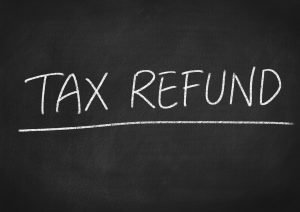 Back to the news
Back to the news
Top Ways To Use Your Tax Refund
Brian Jang ON June 8, 2020Every year, tax time finds many people waiting until the last moment to file their taxes, worrying about any balance that they might be required to pay. At the other end of the spectrum, many Canadians look forward to tax time, anticipating a refund.
If you fall into the latter group, do you already have plans for that extra cash? Perhaps it will go toward vacation or work to be done on your home. Before you spend it though, let’s look at a couple of options that you may not have considered yet. Here are some ways to spend your tax refund.
Pay Your Debts
In all honesty, using a tax refund to pay off debts probably isn’t the first thought that most people have. The tendency is to spend it on something fun or something that you have been putting off until you have a few extra bucks. But paying your debts should always be at the top of your to-do list.
There are a couple of ways to approach debt repayment. The method that actually saves you the most money over time is what is referred to as the debt avalanche. This method involves paying the minimum required payment on each of your debts. Once that is done, whatever is left is applied to the debt with the highest interest rate. Eliminating the highest interest rate first will prove more beneficial in the long run.
Another means of repaying your debts is the snowball method. This is quite different from the avalanche method in that it ignores the interest rate and instead focuses on paying the smallest debt first. Once the smallest is paid, you move on to the next smallest, and move up the ladder until all your debts have been paid. The logic behind this is that many people get discouraged by the amount of debt they have. By eliminating the smallest, and thus easiest to pay, you are achieving a small victory that can motivate you to continue. These smaller successes help you keep going.
While one or the other of these methods might appeal to you, there is one more thing to consider: secured debts. These debts are tied to assets, such as a car loan. If you have fallen behind on payments for these types of assets, prioritize them. It is worth paying these loans first, even if they have lower interest because failure to do so could lead to repossession if you miss payments.
Invest Your Return
Another option is to invest the money from your return in tax-sheltered accounts. These include RRSPs and TFSAs. You should only consider this once you have cleared your high-interest debt, however.
If you choose to invest in an RRSP, you will benefit from a tax deduction for your contributions. Additionally, any gains in the account are sheltered from taxation, only paying taxes when you make withdrawals from the account following your retirement.
TFSAs are also an excellent choice, even if you do not receive a tax deduction on the contributions. The advantage they have is that not only are the accounts sheltered from taxation as with an RRSP, you will pay no tax when you make withdrawals.
Your best bet in the long run may be an investment in the stock market, largely due to the compounding effect. A simple example of this is earning 5% on $1,000 in a year. Now that you have $1,050 in the account, the next year 5% would get you $52.25. As time passes, the interest you earn will also earn interest, causing your investment to grow at an accelerating rate. With enough time, your investment will surprise you with how fast it is growing.
While none of this sounds as exciting or immediately gratifying as a nice vacation or a special treat for yourself, in the long run, paying your debts and investing wisely will be even more rewarding.








